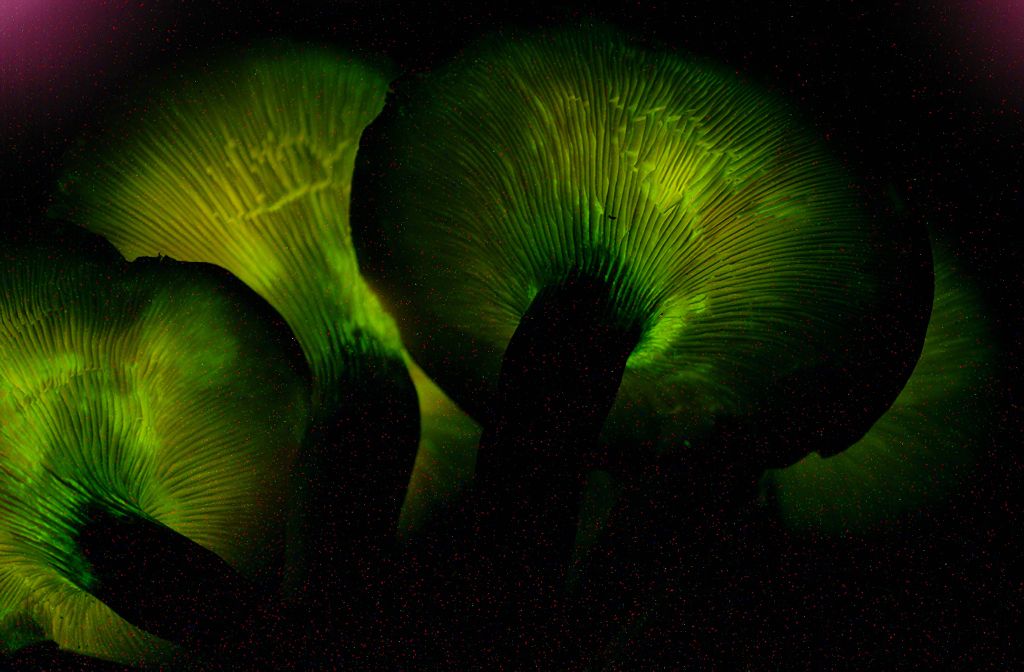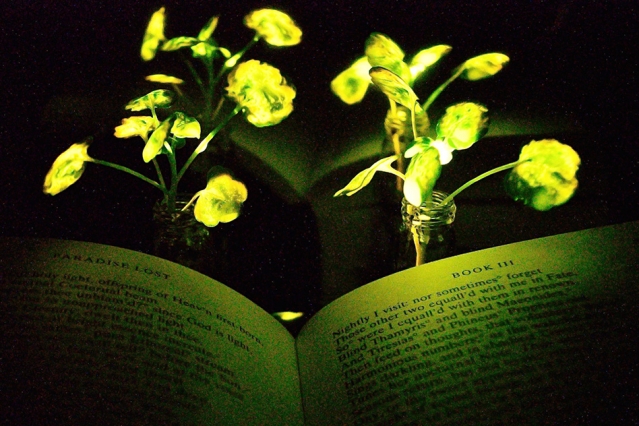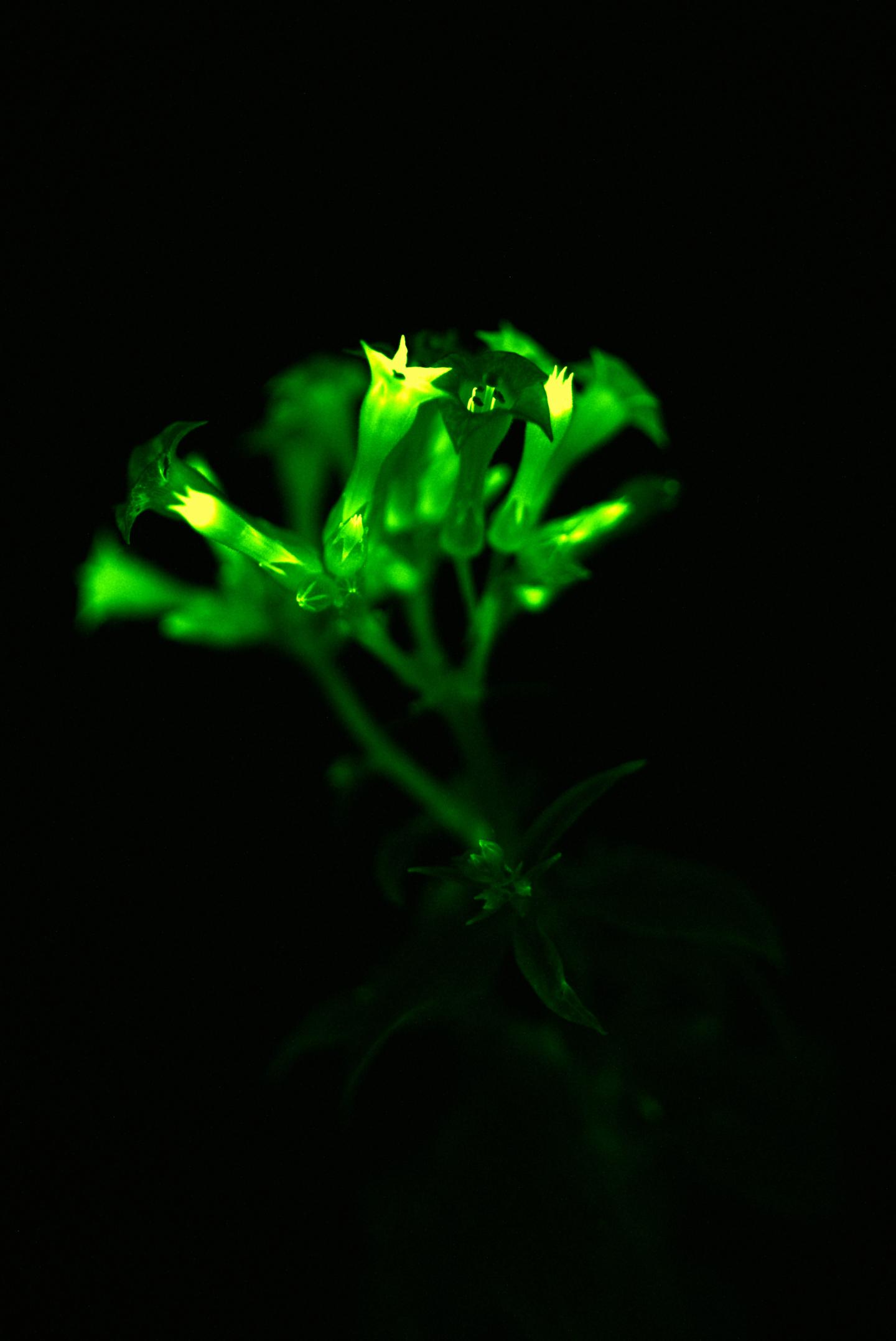There are a number of animals that glow in some way – including several kinds of insects and fish. Some kinds of mushrooms glow, too. But plants don’t glow. Now, scientists are working to change that.
When a living thing gives off a glow, it’s called bioluminescence. Fireflies are a well-known example of bioluminescence. Though less well-known, many mushrooms are also bioluminescent.
Fireflies and other bioluminescent creatures light up thanks to chemicals inside their bodies. These chemicals are known as luciferins. Luciferins cause a chemical reaction that gives off light.

(Source: Noah Siegel (Amanita virosa) [CC BY-SA], via Wikimedia Commons.)
Plants don’t naturally have luciferins, so there are no naturally bioluminescent plants. But that hasn’t stopped scientists from trying to create them.
In the past, scientists have created dimly glowing plants by adding DNA from glowing bacteria. Though this worked, the process was challenging. And the glowing effect was weak, perhaps because of the huge differences between simple bacteria and plants, which are much more complicated.
Scientists have also created glowing plants by adding luciferins to plants. But it’s a tricky operation and only works as long as the chemicals last. In 2017, a team at MIT was able to cause watercress plants to glow for about four hours.

(Source: Seon-Yeong KwakMIT.)
Now, researchers at a Russian company called Planta, working with scientists from the United Kingdom and Austria have come up with a new method of creating glowing plants which lasts as long as the plant is alive.
Though mushrooms and plants grow very differently, the scientists focused on an acid that is found in both plants and mushrooms. By adding certain parts of the DNA from glowing mushrooms to ordinary tobacco plants, the scientists were able to create plants that could make their own luciferins using this acid.
The glowing came from all parts of the plant – leaves, stems, roots, and flowers. The scientists report that the greenish light was about 10 times brighter than in earlier glowing plants. The glow was strong enough to be easily recorded with an ordinary camera, but it didn’t affect the health of the plants.

(Source: Planta.)
The researchers believe that glowing plants could help scientists learn more about the way plants work. They point out that the glowing wasn’t constant, but seemed to change, depending upon what was happening inside the plants.
Younger parts of the plants glowed more strongly than older parts. The flowers glowed especially brightly. The researchers sometimes noticed moving patterns or waves of light in the plants. They think these patterns may show activity in plants that normally can’t be seen.
In an unusual twist, the glowing also helps reveal how plants may be affected by things around them. For example, the plants glowed much more strongly when a ripe banana skin was nearby.

(Source: Planta.)
But the researchers don’t think the plants will just be used for science. They think many people may want glowing plants for their beauty. The scientists have already shown that several common flowers, such as periwinkles, petunias, and roses can be made to glow.
Planta is working with a company called Light Bio to develop glowing plants for sale.
